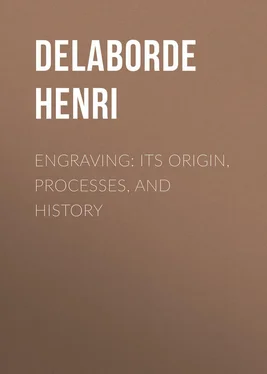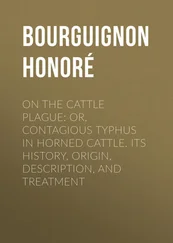Henri Delaborde - Engraving - Its Origin, Processes, and History
Здесь есть возможность читать онлайн «Henri Delaborde - Engraving - Its Origin, Processes, and History» — ознакомительный отрывок электронной книги совершенно бесплатно, а после прочтения отрывка купить полную версию. В некоторых случаях можно слушать аудио, скачать через торрент в формате fb2 и присутствует краткое содержание. Жанр: foreign_antique, foreign_prose, на английском языке. Описание произведения, (предисловие) а так же отзывы посетителей доступны на портале библиотеки ЛибКат.
- Название:Engraving: Its Origin, Processes, and History
- Автор:
- Жанр:
- Год:неизвестен
- ISBN:нет данных
- Рейтинг книги:5 / 5. Голосов: 1
-
Избранное:Добавить в избранное
- Отзывы:
-
Ваша оценка:
- 100
- 1
- 2
- 3
- 4
- 5
Engraving: Its Origin, Processes, and History: краткое содержание, описание и аннотация
Предлагаем к чтению аннотацию, описание, краткое содержание или предисловие (зависит от того, что написал сам автор книги «Engraving: Its Origin, Processes, and History»). Если вы не нашли необходимую информацию о книге — напишите в комментариях, мы постараемся отыскать её.
Engraving: Its Origin, Processes, and History — читать онлайн ознакомительный отрывок
Ниже представлен текст книги, разбитый по страницам. Система сохранения места последней прочитанной страницы, позволяет с удобством читать онлайн бесплатно книгу «Engraving: Its Origin, Processes, and History», без необходимости каждый раз заново искать на чём Вы остановились. Поставьте закладку, и сможете в любой момент перейти на страницу, на которой закончили чтение.
Интервал:
Закладка:
The engravings of Albert Dürer, even those produced in the full force of his talents, for a long time obtained but little favour in France and England. They now possess zealous admirers, and modern painting now and then shows signs of being affected by this enthusiasm; it is in the new German school, of which Cornelius and Kaulbach were the chiefs, that the Nuremberg master seems to have exerted the most important influence, and one which is, even in some respects, to be regretted. It would, however, be unjust to Dürer to saddle him with the burden of errors of which he was but the involuntary cause. However exaggerated may have been the reaction produced by his followers three centuries after his death, considered separately and apart from them, he remains, nevertheless, an eminent artist and the greatest of all his countrymen. Vasari considers that, as a painter and sculptor, "he would have equalled the great masters of Italy, if he had been born in Tuscany, and if the study of the antique had helped him to impart to his figures as much beauty and elegance as they have truth and delicacy;" as a mathematician he ranked among the first of his time in Germany; as an engraver – and it is as such only that we can look upon him here – he enormously advanced the progress of the art. No one before him ever handled the burin with the same skill and vigour; no one ever cut outlines on the metal with such absolute certainty, or so carefully reproduced every detail of modelling.
Конец ознакомительного фрагмента.
Текст предоставлен ООО «ЛитРес».
Прочитайте эту книгу целиком, купив полную легальную версию на ЛитРес.
Безопасно оплатить книгу можно банковской картой Visa, MasterCard, Maestro, со счета мобильного телефона, с платежного терминала, в салоне МТС или Связной, через PayPal, WebMoney, Яндекс.Деньги, QIWI Кошелек, бонусными картами или другим удобным Вам способом.
1
At the present day line engravers sometimes work on steel plates, as they are capable of supplying without damage a much greater number of proofs than can be printed from copper plates. It more frequently happens that a copper plate is coated with steel before being submitted to the action of the press, in order to preserve it, and to increase the number of copies without taking off the edge of the workmanship. That is to say, that by means of "electrotyping" a thin coat of metal is superimposed, which, since it considerably increases the power of endurance, increases the productiveness of the plate and the number of proofs that can be taken.
2
Papillon, "Traité de la Gravure en Bois," 1766, vol. i., ch. 1.
3
Pliny, "Hist. Nat.," xxxv., c. 2.
4
"Materiali per servire alla Storia dell' Incisione," &c., p. 83 and following.
5
That is the "Treatises on Latin Syntax" by Ælius Donatus, a grammarian of the fourth century. In the Middle Ages these treatises were much used in schools.
6
Published by John Koelhoff under the name of "Cronica van der hilliger Stat van Coellen," p. 31 and after.
7
"Essai historique et critique sur l'Invention de l'Imprimerie." Lille, 1859.
8
This, at any rate, is what we feel tempted to do as regards the "Biblia Pauperum," a book containing xylographic illustrations, whose date has been variously estimated, and which we are disposed to believe even older than the first edition of the "Speculum." Heinecken, as usual, claims for Germany the production of this precious collection, which Ottley, with more appearance of reason, regards as the work of an artist of the Low Countries, who worked about 1420. In this way Germany would only have the right to claim the plates added in the German editions published forty years later, and which are far less perfect in point of style and arrangement than those of the original edition.
9
The Dutch word coster means churchwarden, or beadle.
10
"Ideé générale d'une Collection d'Estampes, 1771," p. 305.
11
"Discours Historique sur la Gravure." Paris, 1808.
12
See in "L'Artiste," 1839, an article entitled "La plus ancienne Gravure du Cabinet des Estampes de la Bibliothèque royale est-elle ancienne?"
13
"Notice sur deux Estampes de 1406, et sur les Commencements de la Gravure en Criblé." "Gazette des Beaux-arts," t. I^{er}, 2^e période, 1869.
14
"Le Peintre-Graveur," Leipzig, 1860, vol. i., p. 84.
15
"Une Passion de 1446. Suite de Gravures au Burin, les premières avec Date." Montpellier, 1857.
16
"Archiv für die Zeichnenden Künste," 1858.
17
The "Pax" is a metal plate which, at high mass and during the singing of the "Agnus Dei," the officiating priest gives to be kissed by the clergy and the devout, addressing to each of them these words: "Pax tecum." The "Pax" made by Finiguerra for the Baptistery of St. John has been removed from thence to the Uffizi, where it still is.
18
It is useless to adduce the fine "Profile of a Woman," discovered a few years ago at Bologna, and now the property of the Berlin Museum, as an argument against the poverty we are trying to prove. This very important document is not only of uncertain date, but, as we have remarked elsewhere, the nature of its execution and style forbid one to look upon it as the work of any Florentine artist.
19
Martin Schongauer was born at Colmar, in which town his father had settled as a goldsmith; there he passed the greatest part of his life, and there he died in 1488. Vasari sometimes speaks of him as "Antwerp Martin," or "Martin the Fleming." This is easily explained: a German or Flemish artist would be all one in the eyes of a Tuscan of the fifteenth century, as strangers were all barbarians to the ancient Romans.
20
This is by no means universally admitted to be a genuine work by Martin Schongauer.
21
He had no fewer than eighteen children; Albert was the third.
22
Herr Moriz Thausing has treated this question exhaustively in his important work on Albert Dürer.
Интервал:
Закладка:
Похожие книги на «Engraving: Its Origin, Processes, and History»
Представляем Вашему вниманию похожие книги на «Engraving: Its Origin, Processes, and History» списком для выбора. Мы отобрали схожую по названию и смыслу литературу в надежде предоставить читателям больше вариантов отыскать новые, интересные, ещё непрочитанные произведения.
Обсуждение, отзывы о книге «Engraving: Its Origin, Processes, and History» и просто собственные мнения читателей. Оставьте ваши комментарии, напишите, что Вы думаете о произведении, его смысле или главных героях. Укажите что конкретно понравилось, а что нет, и почему Вы так считаете.












